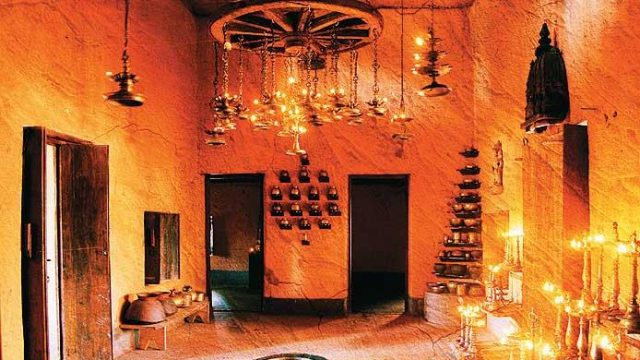Calizz is how the Konkani word for ‘heart’ is spelt in the Roman script. It is also the name of an intriguing, new near-museum experience in Candolim, which seeks to show you the ‘heart of Goan culture’ as it was found in its houses. Like its subject, Calizz is itself a bit of a hybrid — in its pleasant spaces, museum meets lifestyle store. As proof that it is neither, but also a little more than each, it has neither price tags nor placards for the displayed objects. What it does have is a vibrant, eclectic, collection of objects from more than a 100 years to less than 50 years ago, presented engagingly in a couple of graceful old Indo-Portuguese houses as well as some reconstructions of traditional Hindu house types. For the cost of an expensive entrance ticket (but not without the hour-long guided tour), you also get authentic Goan food: a meal with drink in the evening or snacks by day.
Calizz is to museums what Irving Stone’s Lust for Life is to art history. I am no great fan of canned culture, much less of heritage with a capital H that comes with a hefty price tag. And yet, I must say, I enjoyed the brush with history, the stroll through fiction, and most of all the beguiling company of a range of intriguing everyday objects, some exquisite, some ingenious.
The owner, Nandan Kubchadkar established Calizz to house the artefacts that his father, Laxmikant Kubchadkar, had collected over the past 50 years. The layout of the place, like the ‘story’ that every ‘experience’ today must have, is simple. Meet the family of Dona Berta, mother to three sons, and a daughter. Following custom she gives one son to God, one to the Devil and the third to the people. So there you are in the typical Indo-Portuguese house opposite the entrance, with the doctor’s consulting room on one side and the lawyer’s (the one given to the Devil) on the other. Each room is a cabinet of curiosities loosely wrapped around its theme. The doctor’s room is a mini-medical museum — old anatomical charts, all manner of instruments, an injection set, even a shallow cabinet with many kinds of spectacles. The good doctor, it turns out, was a man of multiple medical talents in the good old days before specialisation. I don’t know how indulgent historians (or logicians) on holiday are, but most people won’t mind the inventive elaborations that allow Calizz to stretch its story to show a beautiful pattern of keys on the backdrop to the lawyer’s chair: it turns out he also ran the family business of making keys.
Calizz takes Goan culture very much to heart. The grounds have a large patch for medicinal herbs, and the rest of the land is surfaced with traditional cow-dung paste. Traditional craftsmanship is in evidence everywhere. Most importantly, the objects or the buildings are allowed to be themselves, by and large, particularly the Indo-Portuguese ones: no synthetic paint for the buildings, for instance. The Hindu houses and buildings are smaller, but have interesting bits too, including a gallery of Ravi Verma prints. Go there if you have a weakness for pretty objects. Don’t mistake it for Goan culture as a whole, though, and your imagination will have found some entertainment.
Calizz, Bammon Vaddo, Candolim, Bardez, Goa (0832-3250000/9999, www.calizz.com). Open daily, 11am-11pm. Tariff: Rs 700 for day tour (includes snacks and drinks) and Rs 1,200 for evening tour (includes dinner and drinks).




